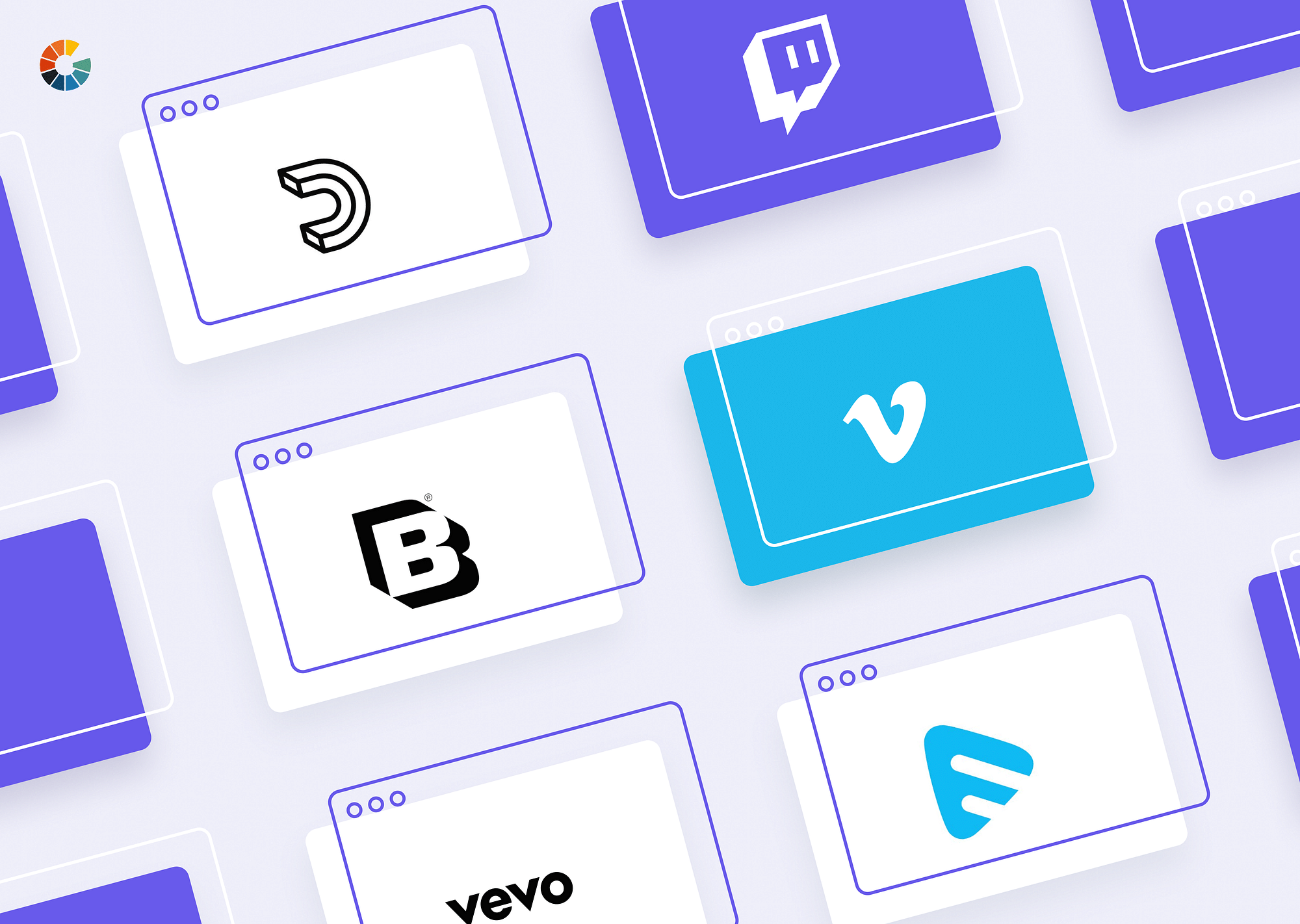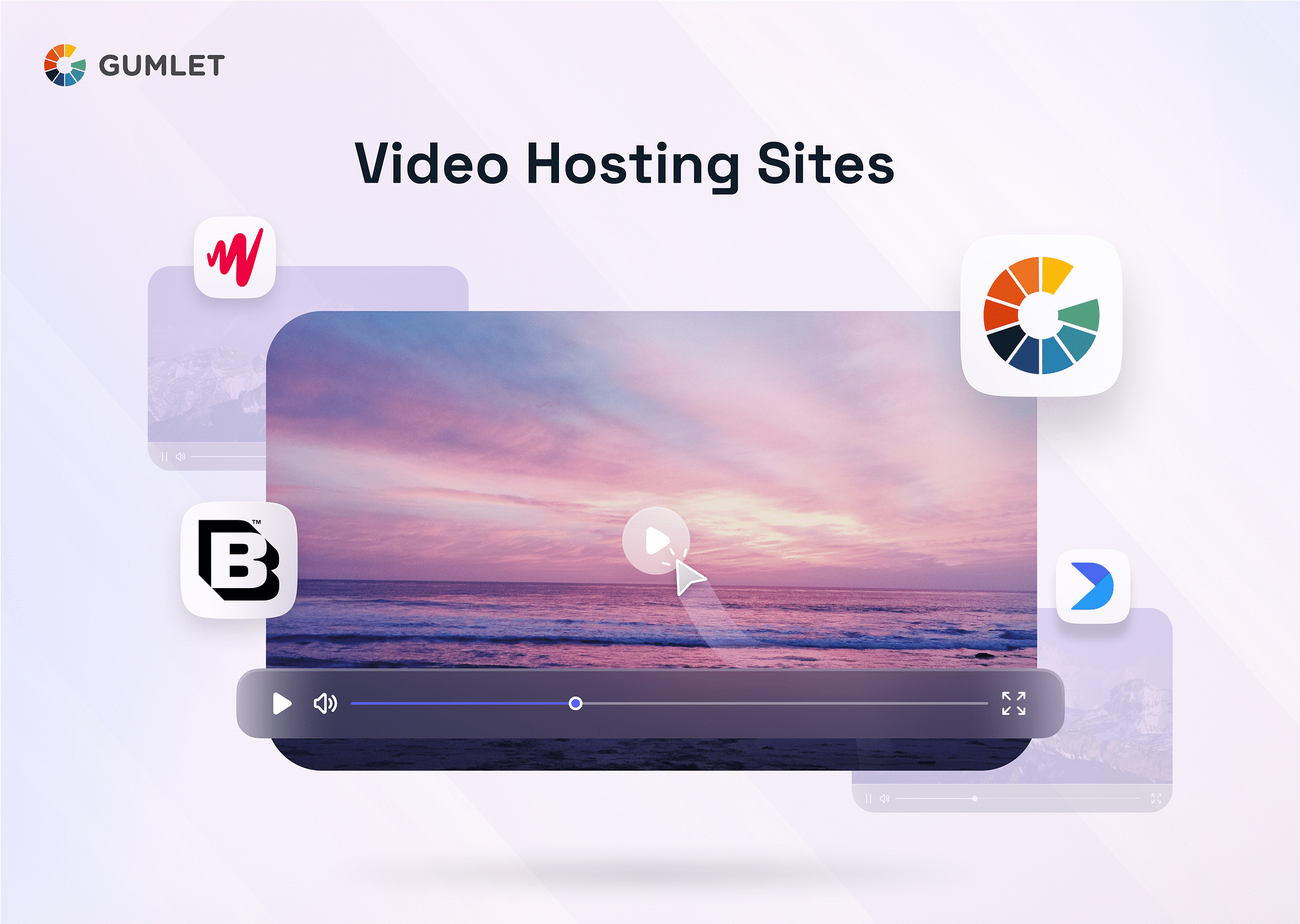The demand for creating captivating video content has greatly increased in the current digital landscape and with it, the importance of selecting the right Online Video Platform (OVP) has become key. Whether you're using video for marketing, education, or pure entertainment, there are numerous online video platforms available today. Here, we have curated a list of the top 10 options that are best suited to enhance the quality of your creative content.
What is an Online Video Platform?
An Online Video Platform (OVP) is a robust tool used by creators and businesses to create and distribute video content to their audience. Unlike real-time video conferencing tools like Zoom or Skype, OVPs let you host content so that viewers can access it at their convenience.
While YouTube is the most well-known OVP, there are many alternatives available, each of which caters to different needs, preferences, and audience engagement. Some popular alternatives include Vimeo and Gumlet. Whether you're using it for marketing, training, or entertainment purposes, a reliable OVP with key features can significantly improve content quality and save your time and resources.
Importance and growth of OVPs
Online Video Platforms (OVPs) are key tools for creators and businesses to showcase their products and expertise through captivating video content. They are especially beneficial because the demand for engaging video content is skyrocketing in today's interconnected world.
- OVPs today have evolved to meet diverse needs, with specific platforms for education, marketing, entertainment, and more.
- Educational platforms like Coursera and Udemy have revolutionized learning by providing interactive video courses taught by top-notch experts from all corners of the globe. Similarly, niche platforms like Twitch allow gamers, artists, and music lovers to come together to share their passions and build tight-knit communities.
- OVPs allow creators to reach a massive audience by effectively breaking down geographical barriers. Whether you're a small-town artist or a big-time entrepreneur, these platforms give you the power to reach people worldwide.
Types of Online Video Platforms
Online Video Platforms (OVPs) are of various types, given the diverse needs and audiences of content creators. These include:
- Commercial Platforms: This includes platforms like YouTube, Vimeo, and Dailymotion, which are ideal for entertainment, tutorials, and a host of other content types.
- Educational Platforms: Whether you're picking up a new skill or diving into academic subjects, educational OVPs have got you covered with structured courses and expert instructors. Coursera, Skillshare, and Udemy are top educational OVPs—to mention a few.
- Niche Platforms: With platforms like Twitch for gaming addicts and top fitness platforms, you can find niche platforms that cater to specific interests. They serve as hubs for people to come together, share content, and connect over shared passions.
- Enterprise Solutions: Gumlet, Brightcove, and JW Player are your best bet for businesses. They offer advanced features like video management tools, top-notch analytics, integration options, and high-level security—which make them ideal for large-scale video projects and marketing campaigns.
Key Features of Online Video Platforms
An effective OVP should have the following key features:
- It should ensure seamless encoding and transcoding processes for optimal playback across various devices and bandwidths. This way, your audience can enjoy your content without interruptions or buffering issues.
- OVPs should offer diverse monetization models such as Subscription Video on Demand (SVOD), Ad-Supported Video on Demand (AVOD), and Transactional Video on Demand (TVOD) to help content creators generate revenue.
- OVPs with API integration capabilities should ensure seamless integrations with third-party services so you have a streamlined workflow.
- There should be built-in security features, including Digital Rights Management (DRM), password protection, AES, etc for content protection. OVPs should also comply with industry-standard security protocols. This will ensure robust content protection and safeguard against unauthorized access or piracy.
- This one is important—OVPs should offer advanced analytics tools that are essential for tracking video performance, audience engagement, and viewer behavior in real-time.
- An OVP should ensure efficient video distribution through global Content Delivery Networks (CDNs). This means minimal latency and buffering and high-quality streaming experiences.
Other features include a built-in video CRM (content rights management) for OTT purposes, an HTML5 video player, billing and subscription options, and more.
Best Online Video Platforms
Let's look at some of the top free and paid online video platforms available to content creators today:
Gumlet
Gumlet provides advanced features to enhance video streaming experiences. It offers robust analytics tools, including latency metrics, allowing creators to gain valuable insights and optimize user engagement. With advanced capabilities, including video DRM, dynamic watermarking, and AI-generated subtitles, Gumlet ensures a seamless and secure video streaming experience for all.
Key Features:
- It has Adaptive Bitrate Streaming that ensures optimal playback quality for viewers.
- It offers HLS & Dash support, which minimizes video buffering and ensures smooth streaming.
- It offers per-title encoding to improve compression performance, enhancing video quality.
- Gumlet's Chat and email support offers prompt assistance for enterprise clients.
- Their advanced analytics give you in-depth insights, from latency to engagement metrics, to help you better understand your audience.
Cons:
- Gumlet has less reach compared to YouTube.
Pricing:
Gumlet offers three pricing tiers: Free, Growth, and Enterprise.
- The Free plan is $0 per month and is best for personal projects
- The Growth plan at $40 per month suits small to mid-sized companies.
- For large companies with custom needs, the Enterprise plan offers a price-on-quote option, providing custom bandwidth limits and features like unlimited image sources, RBAC, SSO, and call support.
YouTube
YouTube is a massive platform, with millions of visitors and billions of video views daily. With its extensive colossal presence and multilingual support, users can benefit from unparalleled exposure to their content.
Key Features:
- Extensive global audience reach
- Intelligent algorithms aid in content discovery
- It offers diverse revenue streams, including ad monetization
- There is seamless integration with social media platforms
- Community-building tools such as comments and discussions foster audience interaction
- Embedding capabilities empower creators to expand their online presence beyond the platform
Cons:
- Its stringent content policies sometimes lead to demonetization or removal of videos.
- There is limited control over ad placements and revenue shares
- The fierce competition poses challenges for new creators to gain traction
- Its algorithms can be difficult to keep up with
Pricing:
YouTube offers free access to its platform for both creators and viewers. However, creators may opt for paid advertising options to amplify their reach and visibility.
Vimeo
Vimeo is a popular platform for businesses creating consumer-facing videos, interactive events, and live streams. It offers features like Vimeo Create for easy video editing and customization. With multiple privacy and security options, including password protection and private links, Vimeo ensures the safety of your content.
Key Features:
- Extensive cloud storage for managing large libraries.
- Privacy controls ensure secure access to content.
- High-quality video resolution enhances viewer engagement.
- Unlimited viewers and events for scalable outreach.
- Robust data analytics provide valuable insights.
Cons:
- Pricing can be expensive for businesses with larger teams or higher usage needs
- Limited customization options compared to self-hosted solutions
- Advertisements may appear on free or lower-tier plans
Pricing:
- Free plan available with limited features
- Paid plans start at $20 per seat per month, offering additional features and benefits. The most premium option, Advanced, priced at around $108/month, includes features such as custom permissions and SSO.
JW Player
JW Player, initially known for its video player app, has expanded its offerings to encompass live streaming and video-on-demand hosting services. While it may not boast a large suite of content creation and management features, JW Player stands out as a cost-effective choice for those seeking a video-sharing solution.
Key Features:
- Diverse monetization options, including ad support
- Cutting-edge HTML5 video player with multi-bitrate and adaptive streaming capabilities
- Global content delivery capabilities
- Intuitive interface ensuring user-friendly experience
- An array of monetization tools to maximize revenue
Cons:
- There is a relative lack of features compared to competitors
- It doesn't have a free plan option
- There are limited avenues for customer support
Pricing:
- You need to contact their Sales team for the pricing.
Dailymotion
Dailymotion is a widely recognized video-sharing platform renowned for its intuitive interface and expansive user base. From unlimited live streams to password and privacy protection for security, Dailymotion offers a ton of useful features.
Key Features:
- Desktop and mobile apps for on-the-go viewing
- Live publication status control
- User-friendly interface
- Available in multiple languages
- Less restrictive copyright policies
Cons:
- Limited reach compared to other platforms
- Distracting ads can affect the viewing experience
- Slow load times for videos
Pricing:
- It is free with a limit of sharing less than 96 videos per day
- Paid plans start at €6,000 per year for enterprise businesses.
Of all the platforms mentioned above, Gumlet stands out as the most suitable choice for various reasons. Its advanced analytics tools offer creators valuable insights to optimize user engagement effectively. With features like DRM protection and dynamic watermarking, along with top-notch streaming tech like Adaptive Bitrate Streaming and per-title encoding, Gumlet takes your video game to a whole new level. It makes a compelling option for content creators seeking to deliver high-quality video content to their audience.
How to Choose an Online Video Platform?
Choosing the perfect Online Video Platform (OVP) for your streaming needs is all about finding the right fit for your goals and budget. Here's how to do it:
- Assess Your Goals: Start by figuring out what you want to achieve with your videos. Are you planning to host live classes, offer on-demand content, or maybe both? Whether it's building an online course empire or launching a captivating video series, make a list of your must-haves and nice-to-haves.
- Consider Monetization: Think about how you'll make money from your videos. Will you sell tickets to live events, offer subscriptions, or run ads? Look for an OVP that supports your preferred monetization methods and offers fair revenue splits to maximize your earnings potential.
- Customization and Support: Do you need to customize your platform with your branding? Do you require extra support for your streaming journey? Make sure your chosen OVP can meet these needs and provide the level of customization and support you require to succeed.
- Compare Features: Once you have a clear picture of what you need, compare different platforms based on your criteria. Look for features like:
- Audience reach and accessibility, including options for video transcripts and captioning.
- Security measures like digital watermarks, encryption, and DRM options to protect your content.
- Multiple monetization options, including ad revenue
- Built-in video analytics to track viewer behavior and engagement, including completion rates, click-through rates, and audience retention.
Conclusion
We all know that the popularity of Online Video Platforms is skyrocketing, and for good reason. These platforms offer creators and businesses alike the tools they need to produce, distribute, and monetize captivating video content. But with so many options out there, choosing the right OVP is absolutely crucial—one that aligns with your specific needs and effectively engages your audience. We hope our blog guides you in finding the right platform for your needs.
FAQs
- Which video platform is better than YouTube for video monetization?
While YouTube is huge, platforms like Vimeo, Gumlet, and JW Player offer more nuanced ways to generate income from your videos. For example, Gumlet provides additional features like adaptive streaming and video optimization to enhance the streaming experience and potentially increase revenue.
- List some free online video platforms for video hosting.
If you want to host videos for free, you can try Dailymotion or Vimeo. They have free plans that let you upload and share videos without paying.
- List some of the best online video platforms that provide video protection.
If you are looking to keep your videos safe, JW Player, and Vimeo are some of the best online video platforms that offer robust security features such as digital rights management (DRM), password protection, and encryption to safeguard content from unauthorized access or piracy.
- List some of the best online video platforms for educational videos.
Educational videos are best suited for platforms like Coursera, Skillshare, and Udemy, which specialize in providing structured learning experiences. These platforms offer interactive tools, evaluation metrics, and certificates to enhance the learning experience.
- What is a self-hosted video?
A self-hosted video is a video that you put on your own website or server instead of uploading it to public domain platforms like YouTube or Vimeo. This gives you more control over your videos—you decide who can watch them and how you want to make money from them.




